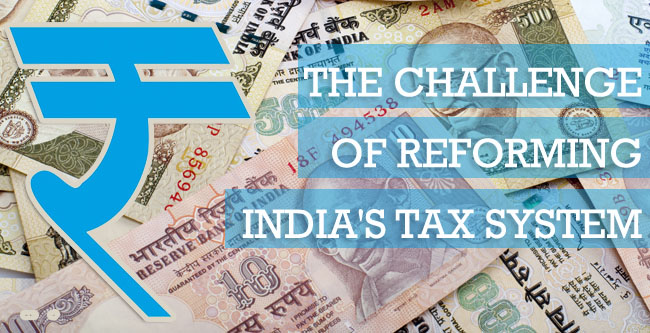India’s taxation system has undergone several changes over the years, and recent tax reforms have brought in several important updates. These reforms aim to simplify tax collection, improve compliance, and boost economic growth. As we step into 2025, understanding the latest tax reforms in India is crucial for individuals, businesses, and investors alike. This blog provides an in-depth look at the new tax reforms, their implications, and how they impact taxpayers in India.
1. Introduction to Tax Reforms in India
Tax reforms are a critical part of any economy’s growth and modernization process. They help improve the efficiency of the tax system, ensure better revenue generation for the government, and create a more equitable taxation structure. In India, the government has continually introduced reforms to address various challenges in the taxation system, ranging from improving tax compliance to expanding the tax base.
2. Key Tax Reforms Introduced in Recent Years
a) Goods and Services Tax (GST) Reform
One of the most significant tax reforms in India in recent times was the introduction of the Goods and Services Tax (GST) in 2017. This was a monumental shift from the old indirect tax structure and aimed to bring all indirect taxes under a single umbrella. The major benefits of GST include:
- Elimination of Cascading Taxes: GST replaces multiple taxes like VAT, excise duty, and service tax, reducing the burden of tax-on-tax.
- Unified Tax Rate: A single tax rate for goods and services across the country promotes business uniformity and reduces confusion.
- Boost to Business: GST promotes ease of doing business by allowing seamless inter-state movement of goods without additional taxes.
However, recent amendments have further refined the system to ensure smoother functioning. These amendments focus on reducing compliance costs and improving the efficiency of the tax filing process.
b) Corporate Tax Rate Reduction
In a bid to boost economic growth and make India more attractive for business investments, the Indian government announced a reduction in the corporate tax rate. As per the new reforms, the corporate tax rate for domestic companies has been reduced from 30% to 22%, and for new manufacturing companies, it has been further reduced to 15%. This has been a significant move to encourage more investments, especially in the manufacturing sector, and attract foreign companies to set up their operations in India.
c) Faceless Tax Assessment
The government introduced faceless tax assessment under the Income Tax Act to reduce human intervention in the tax assessment process. The initiative aims to improve transparency, reduce corruption, and ensure fair treatment for taxpayers. With faceless assessment, taxpayers no longer need to physically visit tax offices, as the entire assessment process takes place online.
d) New Taxation Framework for Virtual Assets
With the rise of cryptocurrency and other virtual assets, the Indian government has introduced a new tax framework for the taxation of virtual assets. The tax reforms now include provisions for the taxation of income from the transfer of virtual assets, such as cryptocurrencies and non-fungible tokens (NFTs), at a flat rate of 30%. This is aimed at regulating the growing digital asset market and ensuring proper taxation.
e) Reforms in Personal Income Tax
Personal income tax reforms have also been introduced to simplify the tax structure. The major updates in personal income tax include:
- New Tax Slabs: The introduction of a new tax regime with reduced tax rates and the removal of several exemptions and deductions has made the tax system simpler. Taxpayers can now choose between the old and the new tax regime based on their preferences.
- Tax Deductible Investments: The government has also increased the limit for tax-deductible investments, such as the Employees’ Provident Fund (EPF), Public Provident Fund (PPF), and National Pension Scheme (NPS), providing more tax-saving opportunities for individuals.
f) Taxpayer Charter
In response to concerns about the taxpayer’s rights, the Indian government has introduced a Taxpayer Charter, which outlines the rights and responsibilities of taxpayers. This initiative aims to protect taxpayers from arbitrary actions and ensure that the tax collection process is transparent and fair.
3. Impact of Tax Reforms on Indian Taxpayers
For Individuals
- Simplicity in Filing Returns: With reforms like faceless assessment and the new tax regime, individual taxpayers can expect a more simplified process for filing their returns.
- Enhanced Tax Savings: The increased limits for tax-deductible investments and exemptions offer more avenues for tax savings, particularly for salaried individuals.
- Better Taxpayer Rights Protection: The Taxpayer Charter ensures that taxpayers can seek redressal for grievances and enjoy better protection against unfair practices by tax authorities.
For Businesses
- Ease of Doing Business: Corporate tax rate cuts, combined with GST reforms and faceless assessments, have made it easier for businesses to operate and comply with tax regulations.
- Boost in Investments: Lower corporate tax rates and a simplified tax structure are likely to encourage both domestic and foreign investments in India, particularly in the manufacturing and technology sectors.
For Investors
- Clarity on Virtual Assets: The taxation of virtual assets brings much-needed clarity to the market, ensuring that investors can now comply with tax regulations when trading cryptocurrencies and NFTs.
- Attractive Investment Opportunities: With the reduction in corporate tax rates and reforms in capital gains tax, the investment climate in India looks promising for investors.
4. Future of Tax Reforms in India
While India has already implemented several progressive tax reforms, the government’s focus on increasing the tax base, improving compliance, and promoting a digital-first approach is likely to continue. Some potential future reforms include:
- Further Simplification of GST: Streamlining the GST filing process and introducing additional reforms to ensure smoother compliance for smaller businesses.
- Tax Reforms for the Gig Economy: With the rise of freelancers and gig workers, future tax reforms may focus on creating specific frameworks for this segment.
- Implementation of Digital Taxation: The government is likely to further expand its digital tax initiatives, ensuring that technology and automation play a key role in simplifying tax processes.
5. Conclusion
Tax reforms in India have been instrumental in transforming the country’s tax system and making it more transparent, efficient, and business-friendly. With the recent changes, India is moving towards a more simplified, equitable, and progressive tax structure. For taxpayers, businesses, and investors, it is crucial to stay informed about these reforms and take advantage of the opportunities they present. As the country continues to evolve, further reforms can be expected to make the tax system even more robust and efficient.
Stay updated with the latest tax reforms and understand how they can impact your financial planning and tax obligations in 2025.



































